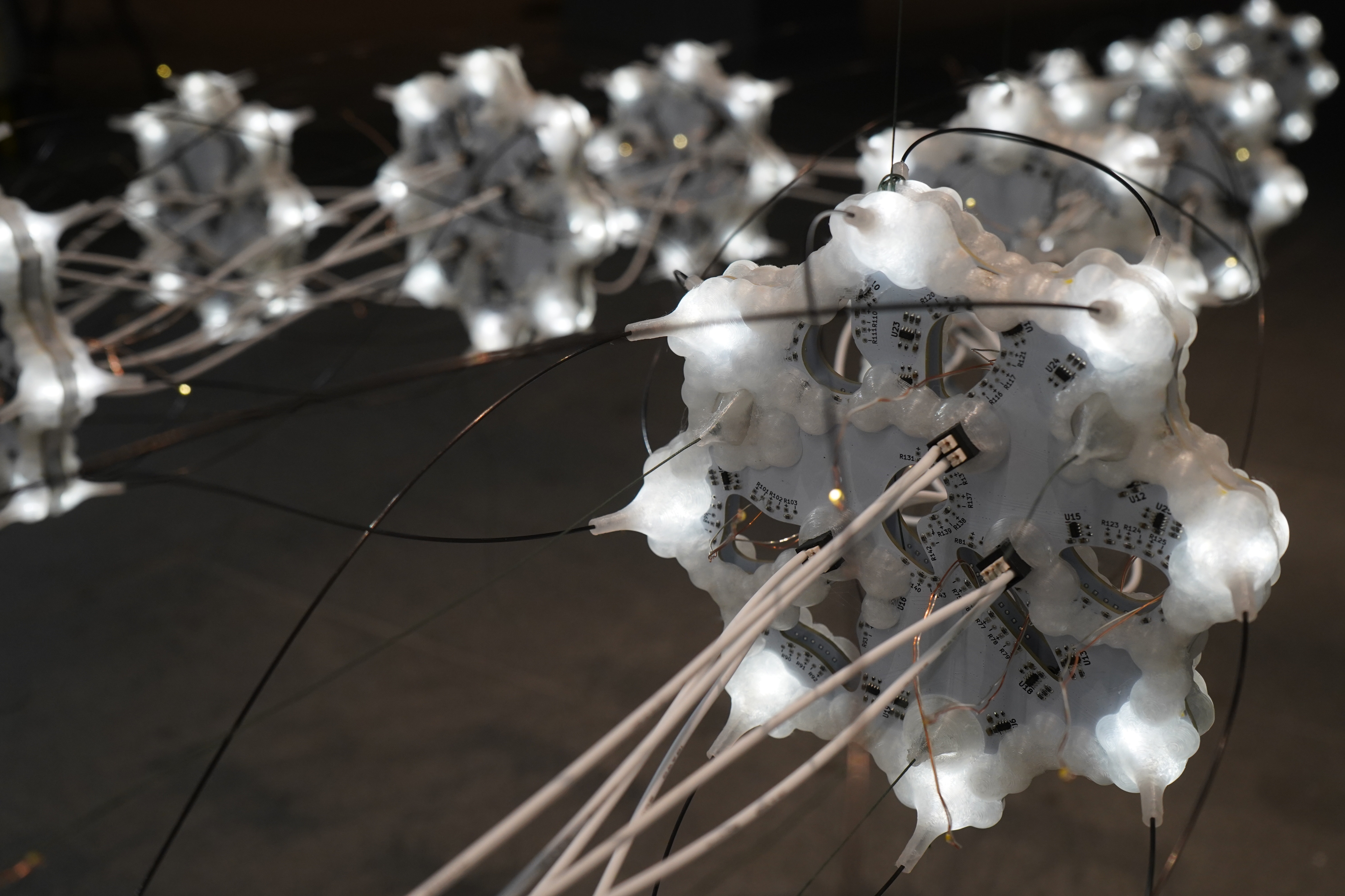Prize(s) Winners in Light Art Project
Lighting Design/Product Company MORAKANA
Lead Designers Sebastian Morales
Other Designer's names Tiri Kananuruk,
Photo Credits MORAKANA
Other Credits David Yang
Completion Date 2025
Project Location New York
Entry DescriptionSuspended just above the floor, Histolysis is a kinetic light installation in slow, recursive transformation. The sculpture takes its name from the biological process by which tissues break down during metamorphosis. Here, histolysis becomes a condition of dissolution that makes transformation possible, not as a loss but as potential. It exists in a state of in-between, where change is taking place and the outcome is unknown.
The sculpture is composed of twenty modular nodes, each a self-contained unit of light, motion, and sensing. These modules connect magnetically, allowing the structure to be easily assembled, repaired, or reorganized. This modularity makes the work inherently adaptive, capable of continuous reconfiguration. The structure behaves less like a machine and more like a distributed body, where local movements ripple across the network in slow, coordinated waves.
Informed by soft robotics, the system operates through geared DC motors, carbon-fiber rods, Dyneema cables, and custom circuits. Motion is tensile rather than forceful, creating gestures that feel organic and somatic. Developed with a focus on slowness and sensitivity, Histolysis reveals illumination as a living process, an agent of decay and renewal that embodies the hidden tempos of transformation.
Sustainability ApproachFor this project, sustainability is understood as a continuous process rather than a fixed goal. The sculpture follows circular design principles through its modular, magnetically connected nodes that can be easily replaced, repaired, or reprogrammed without discarding the system. Each component, from the custom PCBs fabricated in China to the 3D-printed housings, carbon-fiber rods, and LED arrays, is designed for longevity and reuse across future works.
The system runs on low-voltage DC power and uses LEDs with 3 selectable color temperatures (and combinations), allowing the sculpture to function as ambient or full room lighting. This adaptability reduces the need for multiple lighting systems in different contexts. Final assembly and fabrication of structural parts were completed locally to minimize waste.


